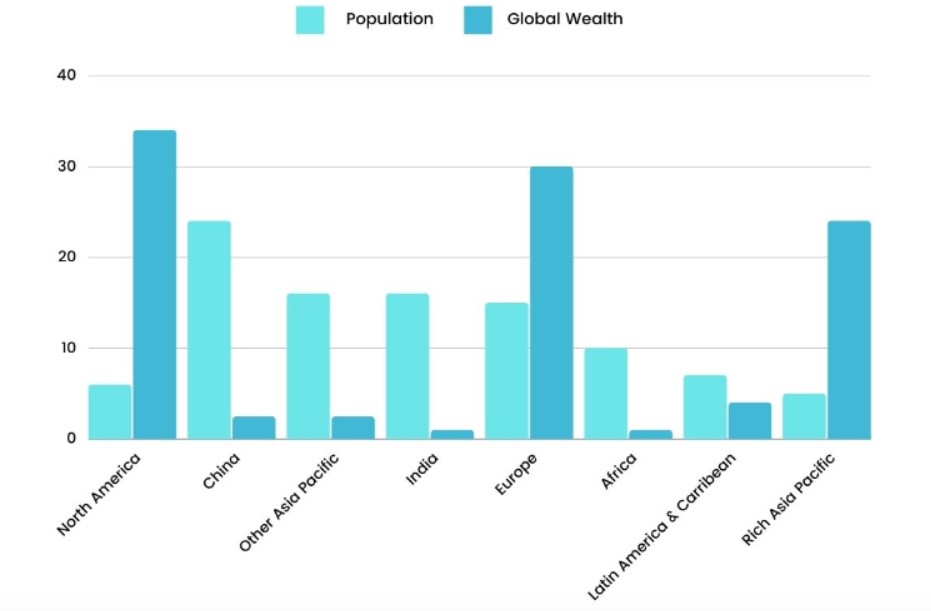Sample 1 : The Chart Below Gives Information About Global Population Percentages and The Distribution
Overall, the North Americans, the Europeans, and the rich Asian Pacific were wealthier compared to the others, whereas the Indians, the Africans, and the Chinese stayed backwards in their economy.
The North Americans were the richest people as their ratio of population to their global wealth was less, and North America was the country with the highest percentage of global wealth, contrary to other countries. Moreover, countries like Europe and the rich Asia Pacific also had an international wealth of more than two-tenths. China was the country with the largest population and a smaller economy. However, the data for India and other Asia Pacific countries were the same: Latin America and the Caribbean show slight variations in the proportion of the population and global wealth.
Sample 2: The Chart Below Gives Information About Global Population Percentages and The Distribution
The bar chart shows the global percentage of population and wealth distribution among regions. Overall, it illustrates the drastic deviations between the wealth and population within eight regions.
China has nearly 25 percent of the world’s population, while regions like the Other Asia Pacific, India, and Europe have more or less similar population levels. Africa, Latin America and the Caribbean, North America, and Rich Asia Pacific have less than 10 percent of the world’s population.
In contrast, when it comes to wealth, regions with the highest populations have more wealth. At the global level, North America is the wealthiest region, followed by Europe and the Rich Asia Pacific despite their lower population. Regions with higher populations, like China, the Other Asia Pacific, and India, share a limited amount of wealth, contrary to Europe. Except for North America, Europe, and the Rich Asia Pacific, all other regions seem to share less than 5 percent of global wealth distribution.
To sum it up, this chart shows the range of wealth and population percentage in eight different regions on a global level.
Follow Us On IELTSFever Facebook Page For More Updates
Pages Content [show]

